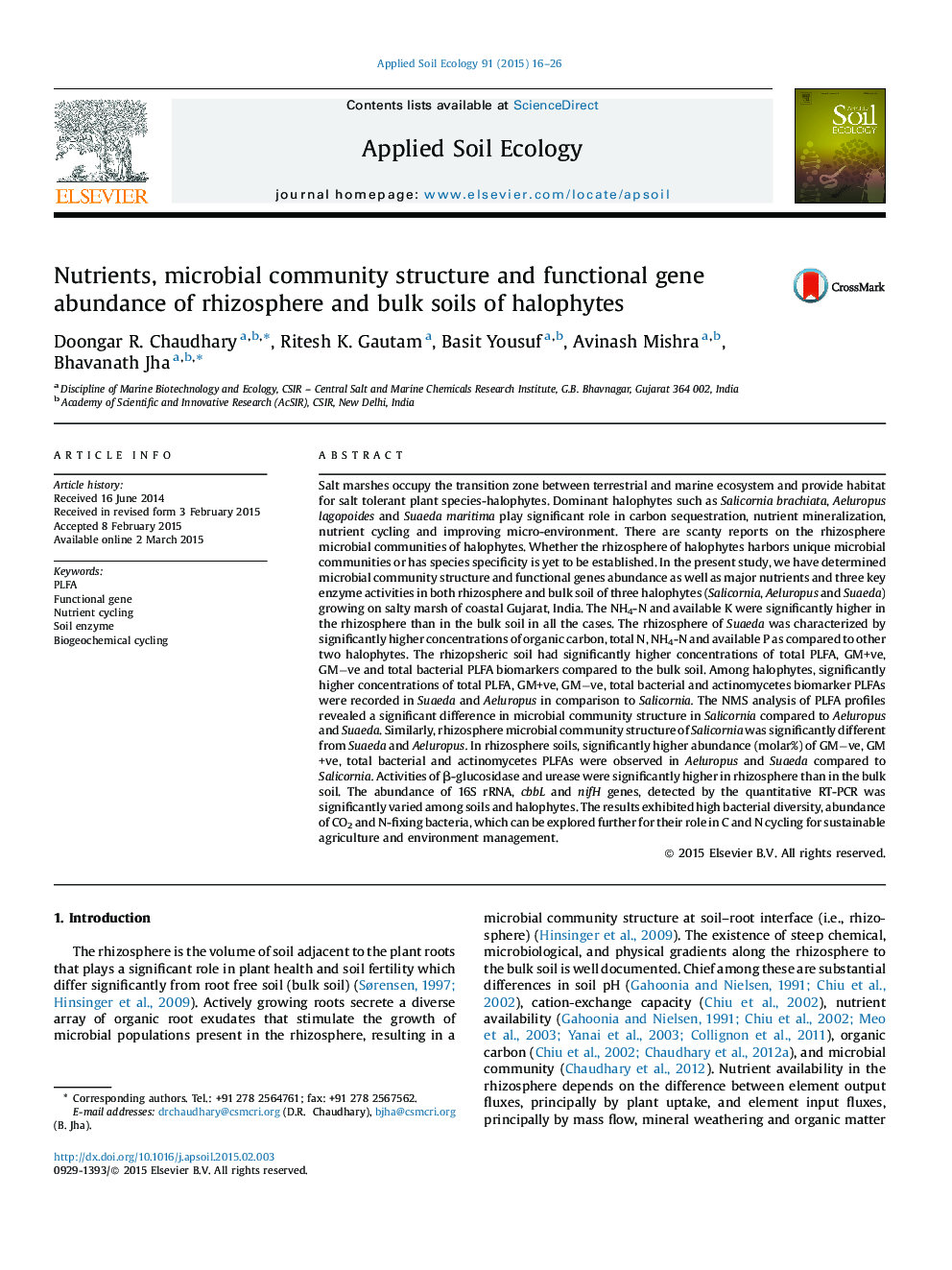| Article ID | Journal | Published Year | Pages | File Type |
|---|---|---|---|---|
| 4382015 | Applied Soil Ecology | 2015 | 11 Pages |
•We studied nutrient, microbial community and functional genes in soil of halophytes.•Total PLFA, GM+ve, GM−ve and total bacterial PLFAs were higher in the rhizosphere.•Microbial community structure of Salicornia significantly differed to Aeluropus and Suaeda.•Activities of β-glucosidase and urease were significantly higher in rhizosphere.•The abundance of 16S rRNA, cbbL and nifH genes were differed among soils and halophytes.
Salt marshes occupy the transition zone between terrestrial and marine ecosystem and provide habitat for salt tolerant plant species-halophytes. Dominant halophytes such as Salicornia brachiata, Aeluropus lagopoides and Suaeda maritima play significant role in carbon sequestration, nutrient mineralization, nutrient cycling and improving micro-environment. There are scanty reports on the rhizosphere microbial communities of halophytes. Whether the rhizosphere of halophytes harbors unique microbial communities or has species specificity is yet to be established. In the present study, we have determined microbial community structure and functional genes abundance as well as major nutrients and three key enzyme activities in both rhizosphere and bulk soil of three halophytes (Salicornia, Aeluropus and Suaeda) growing on salty marsh of coastal Gujarat, India. The NH4-N and available K were significantly higher in the rhizosphere than in the bulk soil in all the cases. The rhizosphere of Suaeda was characterized by significantly higher concentrations of organic carbon, total N, NH4-N and available P as compared to other two halophytes. The rhizopsheric soil had significantly higher concentrations of total PLFA, GM+ve, GM−ve and total bacterial PLFA biomarkers compared to the bulk soil. Among halophytes, significantly higher concentrations of total PLFA, GM+ve, GM−ve, total bacterial and actinomycetes biomarker PLFAs were recorded in Suaeda and Aeluropus in comparison to Salicornia. The NMS analysis of PLFA profiles revealed a significant difference in microbial community structure in Salicornia compared to Aeluropus and Suaeda. Similarly, rhizosphere microbial community structure of Salicornia was significantly different from Suaeda and Aeluropus. In rhizosphere soils, significantly higher abundance (molar%) of GM−ve, GM+ve, total bacterial and actinomycetes PLFAs were observed in Aeluropus and Suaeda compared to Salicornia. Activities of β-glucosidase and urease were significantly higher in rhizosphere than in the bulk soil. The abundance of 16S rRNA, cbbL and nifH genes, detected by the quantitative RT-PCR was significantly varied among soils and halophytes. The results exhibited high bacterial diversity, abundance of CO2 and N-fixing bacteria, which can be explored further for their role in C and N cycling for sustainable agriculture and environment management.
